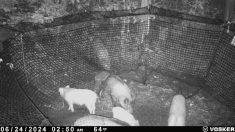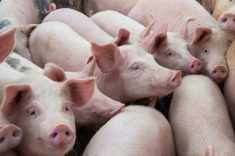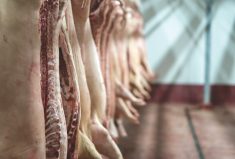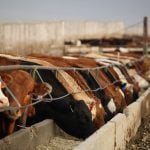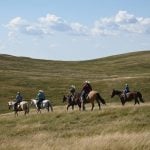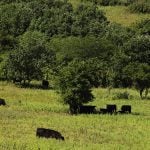The fallout if African swine fever arrives in Canada is enough to keep the pork sector up at night.
There would be direct animal health impact from a virus that devastated hog barns in China and other Asian nations only a few years ago. The impact on markets and trade, however, is possibly the greater nightmare.
Why it matters: Stakeholders are determined to ensure everyone in the value chain and veterinary response will be ready if African swine fever is found in Canada.
Read Also
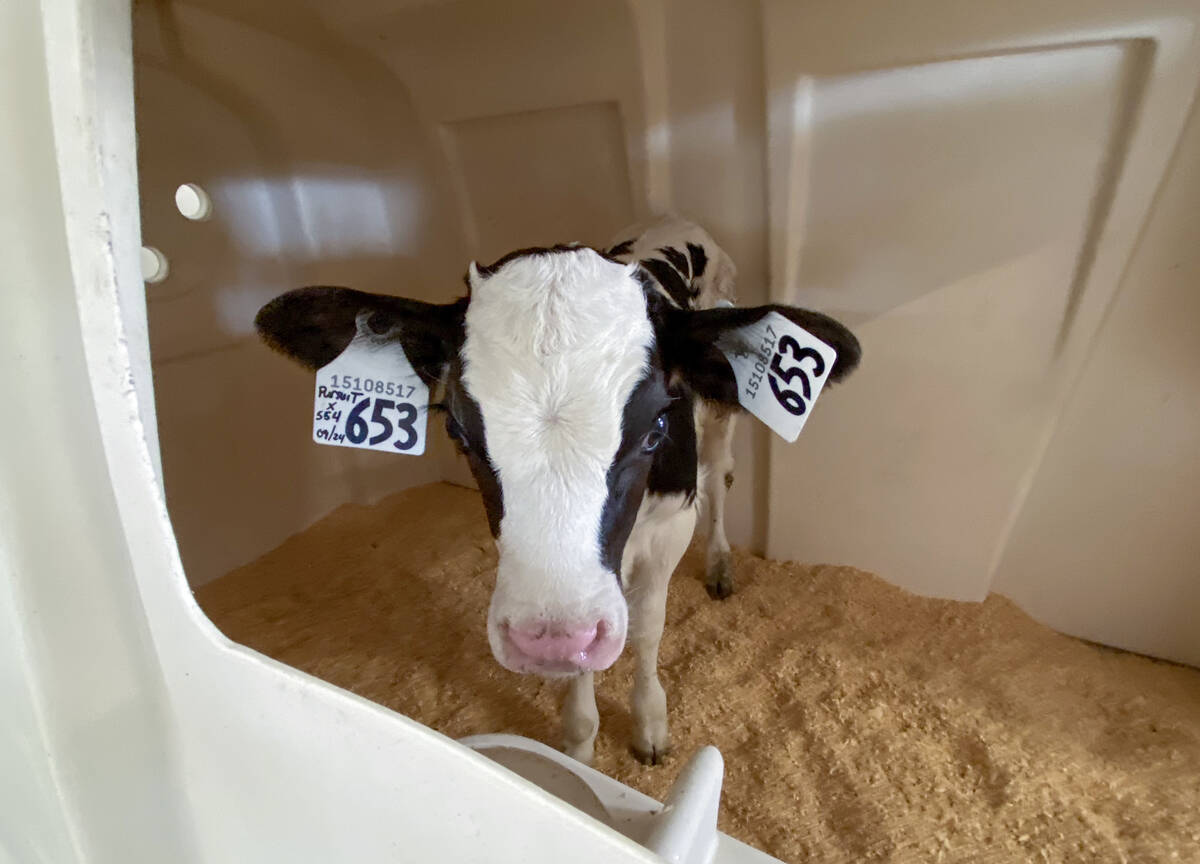
Lactanet turns methane expertise into business opportunity
Lactanet’s new fee-for-service breeding tool initiative to reduce greenhouse gas emissions in Canadian and Swiss Holstein herds will launch in April 2026.
International markets are the lifeblood of Canada’s pork sector. About 70 per cent of Canada’s pork is exported, according to the Canadian Pork Council, and millions of live animals are also shipped every year. The national pork group counted 5.3 million live breeding, feeder and market pigs exported in 2020.
Minimizing disruption to trade has been a key push in both the U.S. and Canada as governments, industry and veterinary officials build their defences against an incursion of ASF.
“A single case of ASF would require all pork and live hog exports to halt immediately,” said Bobbie Lundquist, CFIA acting director of emergency preparedness, during the Saskatchewan Pork Industry Symposium earlier this fall.
“This would really have a significant consequence, as we know, and create an oversupply of pork relative to our domestic demand, because we have such a strong export of our pigs and our pork products.”
Mark Flynn, director of quality assurance and animal care for the Manitoba Pork Council, shared a similar message in Manitoba, noting it would take months to reopen export markets if they closed due to an ASF case.
Containing damage
Canada’s Pan-Canadian Action Plan on African swine fever aims to prevent that disruption. Mock scenarios are held regularly to test systems and identify gaps in preparedness and management.
The national action plan is built on four pillars: biosecurity and prevention, preparedness planning, business continuity, and coordinated risk communications.
When it comes to business continuity, zoning and compartmentalization are a big part of the conversation. Being able to contain the disease in a geographic area will be key to effectively beating it back and ensuring that most of the industry can continue doing business, said Lundquist.
The current plan is to set an immediate hot zone 10 kilometres around an infected farm, with borders following roads or rivers as boundaries. That zone would then be broken into two parts: a three-kilometre radius infected zone and a restricted zone to a 10-km radius.
More stringent restrictions would apply to the infected zone, Lundquist said. That likely means prohibition of all trade and movement within that three-kilometre radius. Pigs could potentially move in the restricted zone, but only with permits and scrutiny from the CFIA.
An additional security zone is possible further than 10 km, but Lundquist said the agency doesn’t believe they’ll have to apply it.
Swift zoning restrictions could be the difference between a few months of market impact and a year or more of chaos. It will also make a big difference in the pork outlook following any hypothetical outbreak.
”The quicker we can actually get control of the outbreak and be able to assure our international markets that Canada’s controlling the outbreak, the sooner (we) can actually get the border open,” said Flynn.
Watch the birds
It’s the same zoning strategy being applied to avian influenza in Canada. More than 400 poultry sites have been infected in the last three years. Lundquist recommends that pork producers take a look at avian flu zoning requirements and conditions.
“It (ASF) will be very similar to this,” she said.
It’s also important to be familiar with the movement conditions and restrictions.
“Anything going into, out of, within, or through the zone is prohibited from export and is subject to movement and permitting requirements. So, this includes all pigs, pork products and byproducts that can be subject to movement restrictions and permitting.”
Zoning and trade
Arrangements are being made with Canada’s trading partners to recognize disease zoning plans. Following an infection, partners are notified about the creation of a zone, Lundquist said. Those governments must then confirm their acceptance to re-establish trade relations.
The goal is to establish a pre-existing path for that process so things can move quickly if needed, but even an expedited request of acceptance could take a few days, the CFIA director warned.
Nearly 40 per cent of Canada’s pork export value has been secured with zoning arrangements. There are agreements in place with the European Union, United States, Singapore, Vietnam and Hong Kong.
The CFIA’s international affairs branch is working on arrangements with the United Kingdom, Mexico, Chile, South Korea, Philippines and Japan, which would increase market security to 80 per cent of export value, Lundquist told producers.
She cited Japan’s concerns about wild pigs as a cause for delay. Wild pigs are a noted reservoir and vector for ASF in Europe, and Japan has questions about Canada’s national and provincial efforts to monitor and control the invasive species.
“Canada has been doing a lot of back and forth engagement with them on that, and it is progressing well. That’s kind of the indicators that we have from Japan,” she said. “So, we’re hopeful that it will happen at some point in the near future.”
Compartments
Industry also hopes voluntary compartmentalization efforts will assure trade partners and limit impact to business in the case of an ASF infection elsewhere in the country.
Unlike zones, which are set up after an infection is found, compartments are established before a disease problem emerges. A group of farms, processors contractors, etc., can establish a harmonized biosecurity plan, standards and robust traceability. Once established, that compartment would operate under strict prevention rules, essentially creating a pathogen-free pod that could continue to operate unhindered in the case of a domestic ASF infection.
Other defences
Panellists at the Manitoba Pork Council meeting referenced the national surveillance program, CanSpotASF.
“Biosecurity is our first line of defence for disease entering the farm,” said Jenelle Hamblin, the industry group’s director of swine health programs.
Producers must ensure their farm’s biosecurity is updated, all proper procedures are followed and that they and their staff can identify the signs and symptoms of ASF, she said.
If it occurs and a producer is in an infected zone, they must prove their biosecurity protocols are meeting standards.
“You end up being treated as if you’re guilty until proven innocent,” said Dr. Glen Duizer, Manitoba’s chief veterinary officer. “I don’t have an easier way to say that.”
It’s not enough to have biosecurity in place, Manitoba producers were told. It must be written down, assessed, improved when necessary and be ready to implement. — With files from Geralyn Wichers






